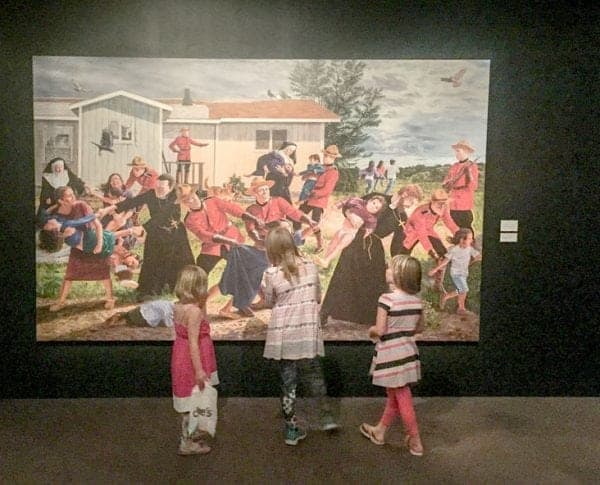On the 10th anniversary of the government of Canada’s apology for the residential school system and its legacy, I would like to share with you how I honour survivors and how I teach my daughters ages 8, 7 and 5 about reconciliation.
Last summer we visited the Glenbow Museum in Calgary to view Indigenous artist Kent Monkman’s exhibition Shame and Prejudice: A Story of Resilience. It features paintings dedicated to the colonial history of Canada, including a graphic depiction of Indigenous children being forcibly removed by Mounties, priests and nuns to be taken to residential school. It is titled, The Scream, and you can view it on kentmonkman.com.
When we arrive at the painting I watch my girls closely to see how they react to the violence. The RCMP officers, priests and nuns tearing children from their parent's arms, and I can feel the agony of the parents and siblings being torn apart. I hear the crow overhead cawing amongst the screams, and crying – confusion and panic fill the painting. I see the older kids running for their lives into the bush.
There is a lone RCMP officer standing calm, feeling justified with his shotgun. Is he going to shoot the parents that refuse to give up their children? Is he going to shoot the children that run? Why does he need a gun against defenseless women and children?
My eight year old stands close, head tilted and arms crossed looking at the mother being held back by two RCMP officers, her hair is being ripped from her head, while a priest carries off her child still in diapers.

“They were taken from their mommies and daddies and not allowed to see them?” asked my six year old.
“Yes, and they were not allowed to speak their language and their long hair was cut off. The adults in charge verbally and physically abused some of the children. Sometimes they were separated from their brothers or sisters and they had to be brave all alone. Sometimes they did not have enough food to eat. Some of them tried to run away back to their families. It was lonely and sad for them.”
I did not include the fact that many of those children never returned home from residential school and they were buried in unmarked graves, with no explanation or details given to their parents.
When they asked who took the children I told them the facts: the Canada government, the RCMP and several different churches including the Roman Catholic Church.
I tell my girls that it is our responsibility to remember the history of residential school and that the government of Canada admitted they were wrong to forcibly remove Indigenous children from their parents and strip them of their culture. Also, that Indigenous people still suffer from the mental, emotional, physical and spiritual abuse they suffered.
I tell them that reconciliation is about truth and making amends for Canada’s painful past. Also, that residential school survivor’s voices must be central to this work.
At the Truth and Reconciliation Commission's closing ceremony Chief Wilton Littlechild stated, “I know that reconciliation will not occur in one lifetime. It will require future generations to know our story and take on the duty of reconciliation. We need to educate our youth and create the tools and put them in place so that our children and our children’s children can use them…there are no easy answers, no magic wand to speed up the reconciliation process.”
The most important contribution I can make to reconciliation is to educate my daughters on Canada’s colonial history, its forced assimilation of Indigenous peoples and the responsibility of the Canadian government to make amends. It is my hope that this next generation of Canadians will be more compassionate citizens with the skills to build respectful relationships.